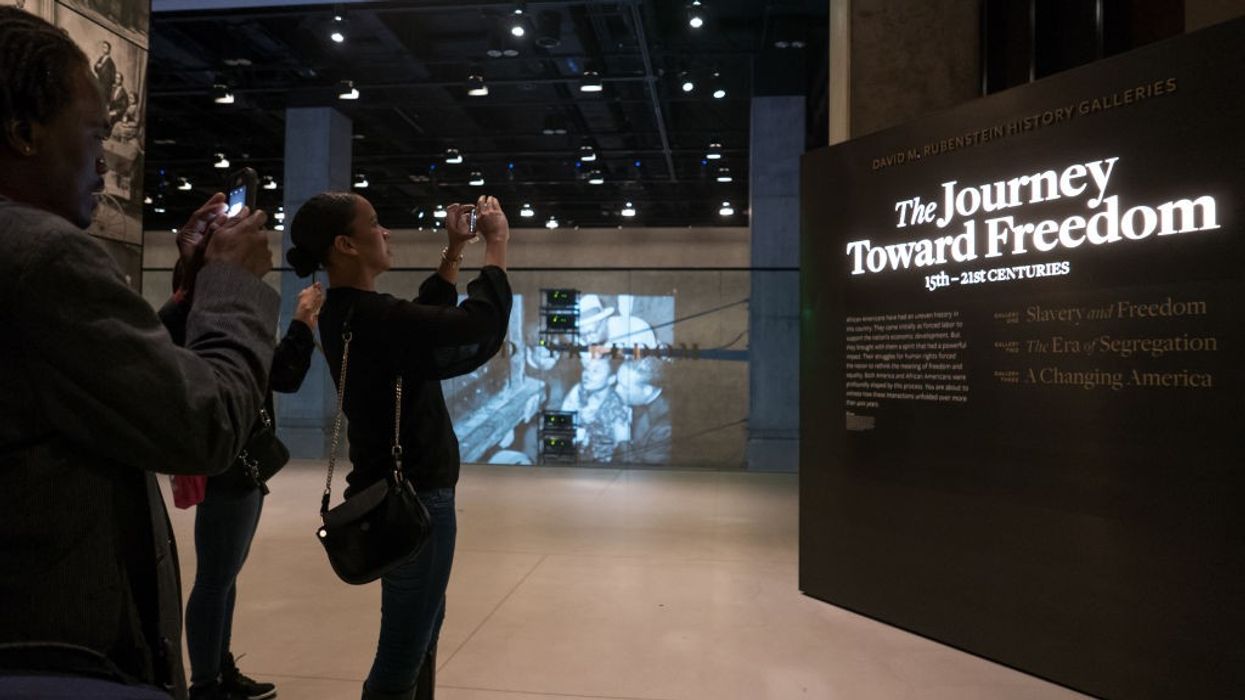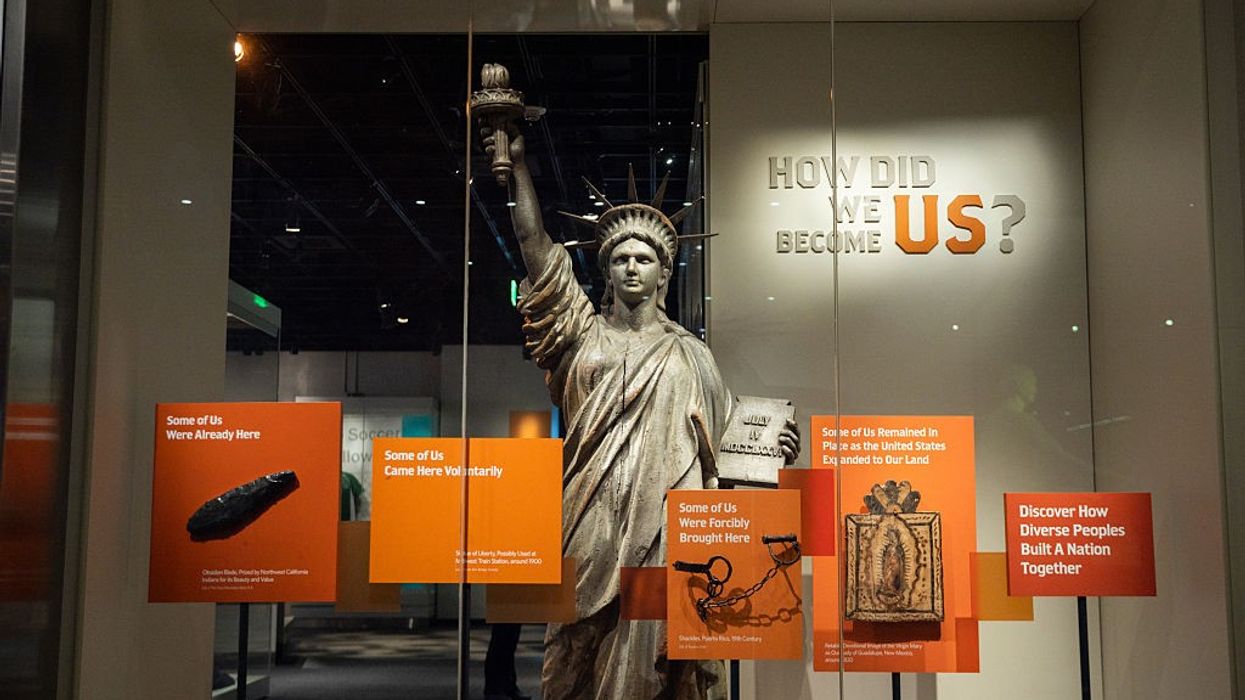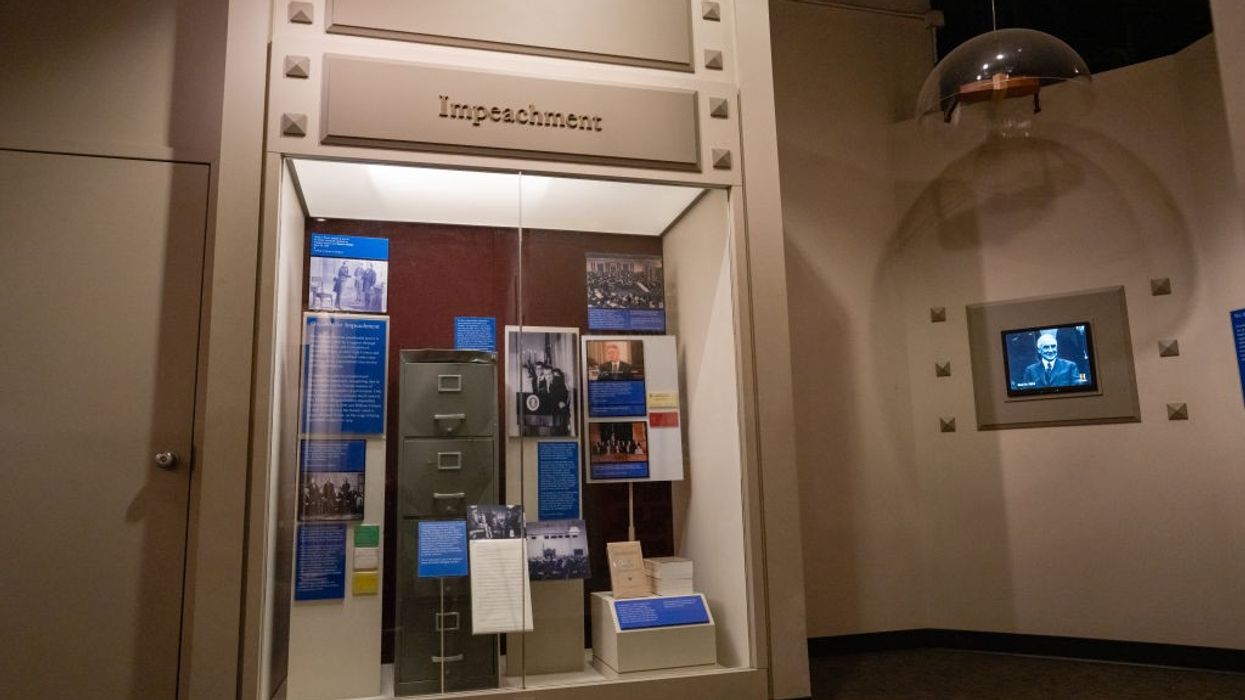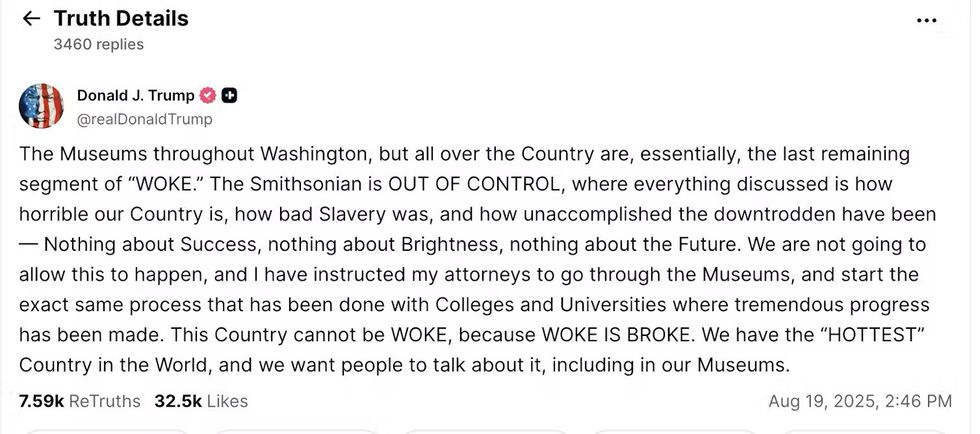Sorry, Trump, Slavery Was Horrific and Central to the Rise of American Capitalism
Capitalist cotton slavery was how United States seized control of the lucrative world market for cotton, emerging thereby as a rich and influential nation.
The malevolent racist and fascist leader Donald Trump, aka “the president of the United States,” has recently ordered a review of the national Smithsonian museums’s presentation of US history, complaining that the museums focus too much on “how bad slavery was” and on other wrongdoings in the noble American record. Trump grumbles that public exhibits on past problems like Native American genocide and Black slavery are nasty, “woke,” and “radical left” distractions from the bigger and more inspiring story of white-ruled America’s glorious rise to capitalist wealth and power. He wants mindless patriotic celebration, not factually informed criticism.
This raises two interesting and curiously related questions:
- How bad was the Black chattel slave system that reigned across the US South from the Declaration of Independence until abolition during and after the Civil War?
- What did that system have to do with America’s supposedly glorious rise to wealth and power?
The answer to the first question depends in no small part on what strikes one as bad. If you are a racist Amerikaner pig like Trump and many of his backers, you are likely to think that US slavery wasn’t bad at all because it subjected people you hate, fear, and view as inferior and unworthy to deserved oppression, control, and exploitation. You might even think, like the demented racist Dinesh D’Souza, that slavery was good for the slaves because it provided paternalistic discipline and direction to lazy, childlike savages.
If you are a decent person with a heart for humanity regardless of skin color, however, you are right to suspect that slavery was not merely bad but horrific almost beyond words—a monumental crime at the heart and soul of an imperialist and capitalist nation that remains starkly racist partly because of its failure to deal honestly and seriously with the reality and legacy of that foundational transgression.
The answer to the second question depends on whether or not you are willing to look into some cold hard facts on slavery’s centrality to the rise of the United States as a power in the world capitalist system.
What “Made the United States Powerful and Rich”
Historian Edward Baptist’s 2014 study, The Half Has Never Been Told: Slavery and the Rise of American Capitalism, eviscerated Americans’ tendency to see slavery as a quaint and archaic “premodern institution” that had nothing really to do with the United States’ rise to wealth and power. In this tendency, slavery becomes something “outside of US history,” even an antiquated “drag” on that history.
That tendency replicates a fundamental misunderstanding curiously shared by antislavery abolitionists and slavery advocates before the Civil War. While the two sides of the slavery debate differed on the system’s morality, they both saw slavery as an inherently unprofitable and static system that was out of touch with the pace of industrialization and the profit requirements of modern capitalist business enterprise.
Nothing, Baptist shows, could have been further from the truth. Unlike what many abolitionists thought, the savagery and torture perpetrated against slaves in the South was about much more than sadism and psychopathy on the part of slave traders, owners, and drivers. Slavery, Baptist demonstrates, was an incredibly cost-efficient method for extracting surplus value from human beings, far superior in that regard to “free” (wage) labor in the onerous work of planting and harvesting cotton. It was an especially brutal form of capitalism, driven by ruthless yet economically “rational” torture along with a dehumanizing ideology of racism.
It wasn’t just the South, home to the four wealthiest US states on the eve of the Civil War, where investors profited handsomely from the forced cotton labor of Black slaves. By the 1840s, Baptist shows, the “free labor North” had “built a complex industrialized economy on the backs of enslaved people and their highly profitable cotton labor.” Cotton picked by Southern slaves provided the critical cheap raw material for early Northern industrialization and the formation of a new Northern wage-earning populace with money to purchase new and basic commodities.
At the same time, the rapidly expanding slavery frontier itself provided a major market for early Northern manufactured goods: clothes, hats, cotton collection bags, axes, shoes, and much more. Numerous infant industries, technologies, and markets spun off from the textile-based industrial revolution in the North. Along the way, shipment of cotton to England (the world’s leading industrial power) produced fortunes for Northern merchants and innovative new financial instruments and methods were developed to provide capital for, and speculate on, the slavery-based cotton boom.
All told, Baptist calculates, by 1836 nearly half the nation’s economy activity derived directly and indirectly from the roughly 1 million Black slaves (just 6% of the national population) who toiled on the nation’s Southern cotton frontier. Sectional differences aside, The Half Has Never Been Told shows that “the commodification and suffering and forced labor of African Americans is what made the United States powerful and rich” decades before the Civil War.
Capitalist cotton slavery was how United States seized control of the lucrative world market for cotton, the critical raw material for the Industrial Revolution, emerging thereby as a rich and influential nation in the world capitalist system by the second third of the 19th century.
“Crimes Which Would Disgrace a Nation of Savages”
The returns were wrung through soul-numbing exploitation overlaid with savage racist torture. Chronicling the horrifying violence and terror inflicted on millions of Black Americans who suffered in bondage over the eight decades between US national independence (1783) and the US Civil War (1861-1865), Baptist documents how the Southern slave engine of American capitalist accumulation murdered Blacks in huge numbers and “stole everything” from surviving slaves through “the massive and cruel engineering required to rip a million people from their homes, brutally drive them to new, disease-ridden places, and make them live in terror and hunger as they continually built and rebuilt a commodity-generating empire…”
Over a generation, The Half Has Never Been Told shows, the infant US South grew from a thin coastal belt of burned-out tobacco plantations into a giant continental Empire of Cotton. This remarkable expansion was rooted in regular and ferocious white violence. The brutality and bloodshed included mass-murderous Indian Removal (cotton slavery required constant Westward territorial extension), forced slave migrations, the endemic fracturing of slave families, and he ubiquitous and systematic torture of Black slaves. As Baptist observes:
In the sources that document the expansion of cotton production, you can find at one point or another almost every product sold in New Orleans stores converted into an instrument of torture [used on slaves]: carpenters’ tools, chains, cotton presses, hackles, handsaws, hoe handles, irons for branding livestock, nails, pokers, smoothing irons, singletrees, steelyards, tongs. Every modern method of torture was used at one time or another: sexual humiliation, mutilation, electric shocks, solitary confinement in “stress positions,” burning, even waterboarding… descriptions of runaways posted by enslavers were festooned with descriptions of scars, burns, mutilations, brands, and wounds.
“What, to the American slave, is your 4th of July?” the great abolitionist Frederick Douglass asked in 1852. “A day,” Douglass answered, “that reveals to him, more than all other days in the year, the gross injustice and cruelty to which he is the constant victim.” Further:
To him, your celebration is a sham; your boasted liberty, an unholy license; your national greatness, swelling vanity; your sounds of rejoicing are empty and heartless; your denunciations of tyrants, brass fronted impudence; your shouts of liberty and equality, hollow mockery; your prayers and hymns, your sermons and thanksgivings, with all your religious parade, and solemnity, are, to him, mere bombast, fraud, deception, impiety, and hypocrisy—a thin veil to cover up crimes which would disgrace a nation of savages. There is not a nation on the earth guilty of practices, more shocking and bloody, than are the people of these United States, at this very hour… Go where you may, search where you will, roam through all the monarchies and despotisms of the old world, travel through South America, search out every abuse, and when you have found the last, lay your facts by the side of the everyday practices of this nation, and you will say with me, that, for revolting barbarity and shameless hypocrisy, America reigns without a rival.
Mein Trumpf’s Beloved Confederacy
The slave state Confederacy (1861-65) formed, seceded from the United States, and waged a Civil War against the nation’s non-slave states—an epic struggle that cost more than half a million lives—precisely to defend and preserve “the gross injustice and cruelty” of Black chattel slavery. The “cornerstone” of the Southern secessionist government, Confederacy Vice President Alexander Stephens explained on March 21, 1861, was “the great truth that the negro is not equal to the white man, that slavery subordination to the superior race is his natural and normal condition.”
The Nazi regime of the 1930s and 1940s also believed (to say the least) in the natural inferiority of certain subordinated races (as did late 20th century right-wing US academics like Charles Murray, Richard Herrnstein, and Stephen Pinker). Such was the harsh reality of the treasonous breakaway Southern government whose “beautiful monuments and statues” the deranged white supremacist and fascist thug Trump has called “ours” and considered “part of a Great American Heritage” of “Winning, Victory, and Freedom.”
This history is worth keeping in mind after Trump47 and his white nationalist Christian fascist Defense Secretary Pete Hegseth have sickeningly and tellingly ordered the renaming of US military bases after Confederate Slave Power military leaders and “war heroes.” Hegseth is the member of an evangelical sect whose pastor claims that the best period in US race relations was the slave era.
Plenty of Trump’s neo-Confederate supporters would like nothing more than the restoration of Black enslavement, trust me.
A “Quintessential American Story”
Some words on Thomas Jefferson, the removal of whose statue from New York City Hall once sparked Trump’s anger… One of many wealthy white widowers who used young Black female slaves for sexual release before and after the American “revolution” (which was fought partly to ensure the survival and expansion of North American Black chattel slavery), the author of the Declaration of Independence enjoyed prominence as a “revolutionary leader” while keeping some of his own children as slaves.
Henry Wiencek’s rightly heralded volume, Master of the Mountain: Thomas Jefferson and His Slaves (2012) dug into previously overlooked evidence in Jefferson’s papers and archaeological work at Jefferson’s Monticello site to paint a depressing picture of Jefferson’s stunted, penny-pinching world. As one reviewer noted:
Wiencek’s Jefferson is a man of business and public affairs who makes a success of his debt-ridden plantation thanks to what he calls the “silent profits” gained from his slaves and thanks to a skewed moral universe that he and thousands of others readily inhabited. We see Jefferson taking out a slave-equity line of credit with a Dutch bank to finance the building of Monticello and deftly creating smoke screens when visitors are dismayed by his apparent endorsement of a system they thought he’d vowed to overturn. It is not a pretty story. Slave boys are whipped to make them work in the nail factory at Monticello that pays Jefferson’s grocery bills. Parents are divided from children in his ledgers… Slaves are bought, sold, given as gifts, and used as collateral for the loan that pays for Monticello’s construction—while Jefferson composes theories that obscure the dynamics of what he himself called “the execrable commerce.” Many people saw a catastrophe coming and tried to stop it, but not Jefferson. The pursuit of happiness had become deeply corrupted, and an oligarchy was getting very rich. Is this the quintessential American story?
A quintessential American story indeed, one that is embodied very well in the history of Trump himself, son of a Klansman.
How bad was Black chattel slavery? For decent human beings it was horrific and criminal—religious humanists commonly join 19th-century abolitionists in calling it sinful—almost beyond words and moral comprehension! And this epic crime of “revolting barbarity” lay at the underlying material-historical and historical-material heart and foundation of the rise of the white supremacist American capitalism that the depraved real estate parasite and fascist leader Trump wants to see more properly celebrated in the national culture.



 A screenshot is shown of President Donald Trump’s August 19, 2025 Truth Social post about the Smithsonian.
A screenshot is shown of President Donald Trump’s August 19, 2025 Truth Social post about the Smithsonian.  As part of efforts to purge references to gay people, US Defense Secretary Pete Hegseth has ordered the removal of gay rights advocate Harvey Milk’s name from a Navy ship. (Photo: Screenshot/Military.com)
As part of efforts to purge references to gay people, US Defense Secretary Pete Hegseth has ordered the removal of gay rights advocate Harvey Milk’s name from a Navy ship. (Photo: Screenshot/Military.com)